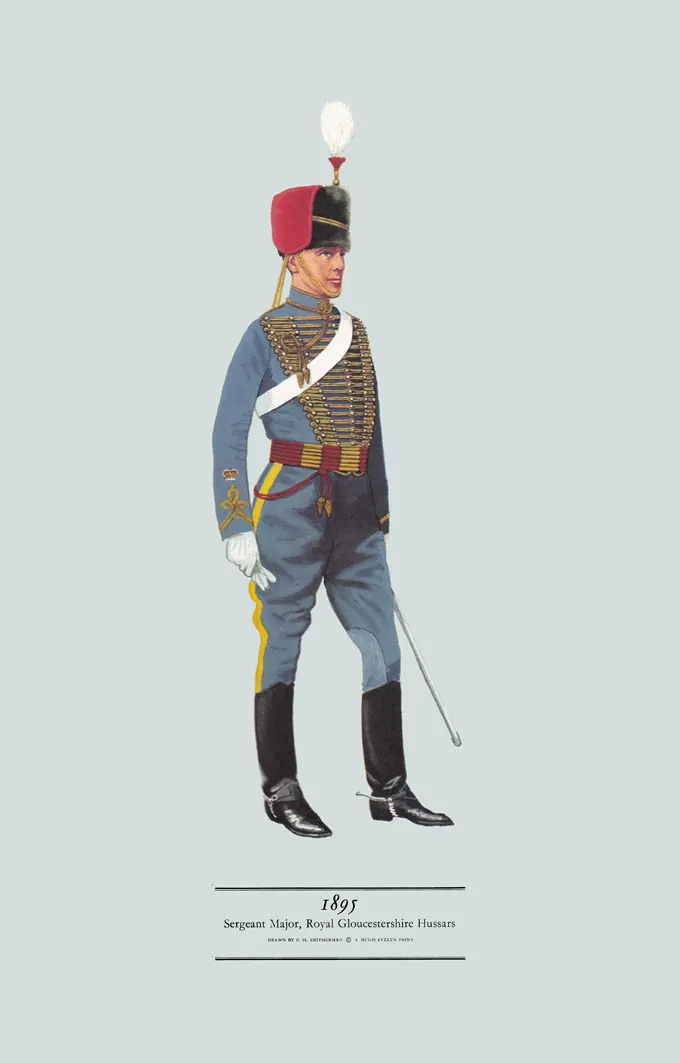Sergeant Major, Royal Gloucestershire Hussars, 1895
£10.00
Cheltenham Troop of Gloucestershire Gentleman and Yeomanry (1795) became Royal Gloucestershire Hussars (1847)
(scroll down for a more detailed Description)
Published 1967 by © Hugh Evelyn Limited; drawn by Colonel Philip Henry Smitherman (1910-1982), Royal Corps of Signals
Size: c. 24.5 x 37.5cm [9 ½ ″ x 14 ½ ″] (may vary slightly from printers’ cut 50 years ago)
Printed on on medium cardstock weighing 144 g/sm2 faced in light greyish blue (RGB c. d5dede)
Print is STANDARD size – shipping is the same for 1 to 10 prints (based on largest print size in your order) – see Shipping & Returns
In stock
- Satisfaction Guaranteed
- No Hassle Refunds (see Shipping and returns)
- Secure Payments
Description
It traced its origins to the First or Cheltenham Troop of Gloucestershire Gentleman and Yeomanry raised in 1795, although a break in the lineage means that its formation is dated to the Marshfield and Dodington Troop raised in 1830. Six further troops – officered by nobility and gentry and recruited largely from among landholders and tenant farmers – were subsequently raised in Gloucestershire, and in 1834 they came together to form the Gloucestershire Yeomanry Cavalry. In 1847, the regiment adopted a hussar uniform and the name Royal Gloucestershire Hussars. The Regiment was active in the Boer War. All volunteer forces, including the yeomanry, were brought into the Territorial Force before WW I. The regiment saw action as infantry at Gallipoli and as cavalry in the Sinai and Palestine Campaign. After the war, the regiment downsized and converted to the 21st (Royal Gloucestershire Hussars) Armoured Car Company. Its lineage continues as part of the Royal Wessex Yeomanry. Here is another uniform worn by the regular army before 1854. After that date all regular hussars wore a tunic with six rows of frogging only. As the Regimental Sergeant Major, this warrant officer wears a uniform very similar to that of his officers. The distinctive colour of the uniform is known as ‘Badminton Blue’, the Dukes of Beaufort having been related to the regiment throughout its history. The officers of the regiment shared with the Yorkshire Hussars and the Westmorland and Cumberland Yeomanry the distinction of wearing a pelisse in levee dress.
Source: Regimental photographs.
Additional information
| Weight | 0.012 kg |
|---|---|
| Dimensions | 24 × 37 cm |




